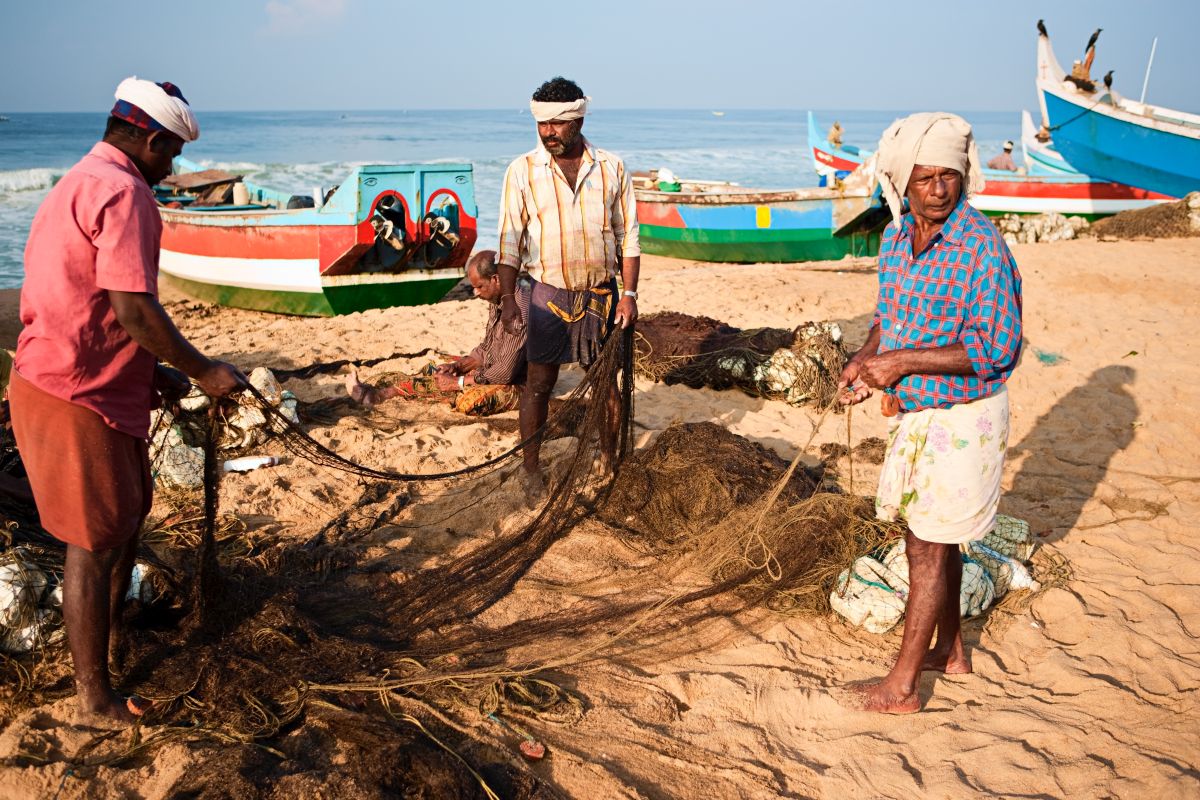Section 144 imposed on coastal areas of Puducherry as cyclone ‘Michaung’ approaches
In order to prevent any loss of life or property, the district administration restricted the movement of all persons on the coastal areas.
The coast supports a wide variety of marine flora and fauna that coastal communities rely on for their livelihood. The degradation of these ecosystems leaves these areas susceptible to natural disasters that can have long term effects on the sustainability and growth of coastal communities.

Photo: Getty Images)
On 28 December 2018, the Union cabinet approved a new Coastal Regulation Zone (CRZ) notification. The new notification prioritizes economic growth in coastal areas while claiming to balance any new development with the conservation of the coast. The policy has done away with or diluted many restrictions from the previous notification, allowing construction closer to the High Tide Line.
The 7,500-km long Indian coastline has been a hotbed of industrial and commercial activities such as the construction of ports, thermal power plants, SEZs, resorts, hotels and real estate projects. To ensure that all these activities would be maintained, the CRZ notification has been amended 34 times in 27 years. Virtually all amendments are intended to open up the coast for further development. In 2015, the Shailesh Nayak committee urged amending the CRZ notification of 2011 to make way for resorts and hotels in eco-sensitive areas along the coast.
Subsequent amendments to the 2011 notification indicate three trends: the opening of coasts for more commercial and tourism projects; fast-tracking and streamlining of the appraisal process; and allowing state governments a bigger role in coastal decision-making. These changes were made without much public consultation, despite their large impact on coastal communities. Participatory review is critical because changes in the coastal regulation has a direct bearing on over 3200 marine fishing villages and several million residents living across India’s coastline.
Advertisement
The coast supports a wide variety of marine flora and fauna that coastal communities rely on for their livelihood. The degradation of these ecosystems leaves these areas susceptible to natural disasters that can have long term effects on the sustainability and growth of coastal communities.
The number of people living in low-elevation coastal zones in India is projected to double by 2060. The number of people in India exposed to flooding by 1-in-100-year storm surges is projected to be around 65 million in 2060, making it potentially the worst affected country after China. A study based on precipitation data conducted at IIT-Gandhinagar has warned of frequent and extreme flooding in 78 out of 89 Indian cities, if the global mean temperature increases from 1.5 to 2°C from the pre-industrial level.
The catastrophic Kerala floods of 2018 illustrate how devastating these events can be on coastal economies. It is imperative that proper mechanisms be implemented to preempt disaster situations and that long-term emission reduction policies like the Paris Agreement be implemented to minimize the consequences and frequency of these events. The last two decades have seen a proliferation of industrial activity on the coast. Power plants, Special Economic Zones, ports, urban construction, desalination plants and tourism projects all over the coast are damaging fragile coastal eco-systems.
Coastline changes resulting in increasing coastal erosion, destruction of mangroves, levelling of sand dunes, loss of valuable inter-tidal zone areas, degradation of fish habitats and nursery grounds via coral bleaching, loss of coastal aquifers, and increasing pollution from industrial and urban effluents threaten the natural capital that is the basis of fishing. Fishing Communities are also being displaced in many areas.
These issues are just the tip of the iceberg when it comes to India’s coasts. The large scale dumping of effluents into the Indian Ocean and Arabian Sea has caused both the Bombay High Court and the Supreme Court to reprimand both Central and State Authorities. The Supreme Court observed that the Centre was allowing the dumping of hazardous waste from foreign countries in exchange for payment. This is a classic case of how the third world is directly affected by the excessive consumption of the West. Disputes over displacement resulting from the new notification are likely to come before the National Green Tribunal (NGT).
The NGT has intervened in numerous coast-related cases, balancing the rights of coastal communities with development activities and awarding compensation where necessary. An instance of this is Ramdas Janardan Koli and Others v. Secretary, MoEFCC and Others, where traditional fishermen from coastal villages sought compensation from the City & Industrial Development Corporation of Maharashtra, Jawarharlal Nehru Port Trust and the ONGC. The NGT concluded that the JNPT, CIDCO and ONGC were responsible for damaging the environment and affecting the livelihood of the fishermen in that area. It ordered the organisations to pay an amount of Rs. 95 crore to 1630 families. The coast is an extremely vulnerable area when it comes to climate change and environmental degradation. Strict regulation of their use is crucial to protect the lives of all communities in the area. India must act decisively and firmly to protect their interests.
(The writers are, respectively, a student and a professor of law at Jindal Global Law School in Sonepat, Haryana.)
Advertisement